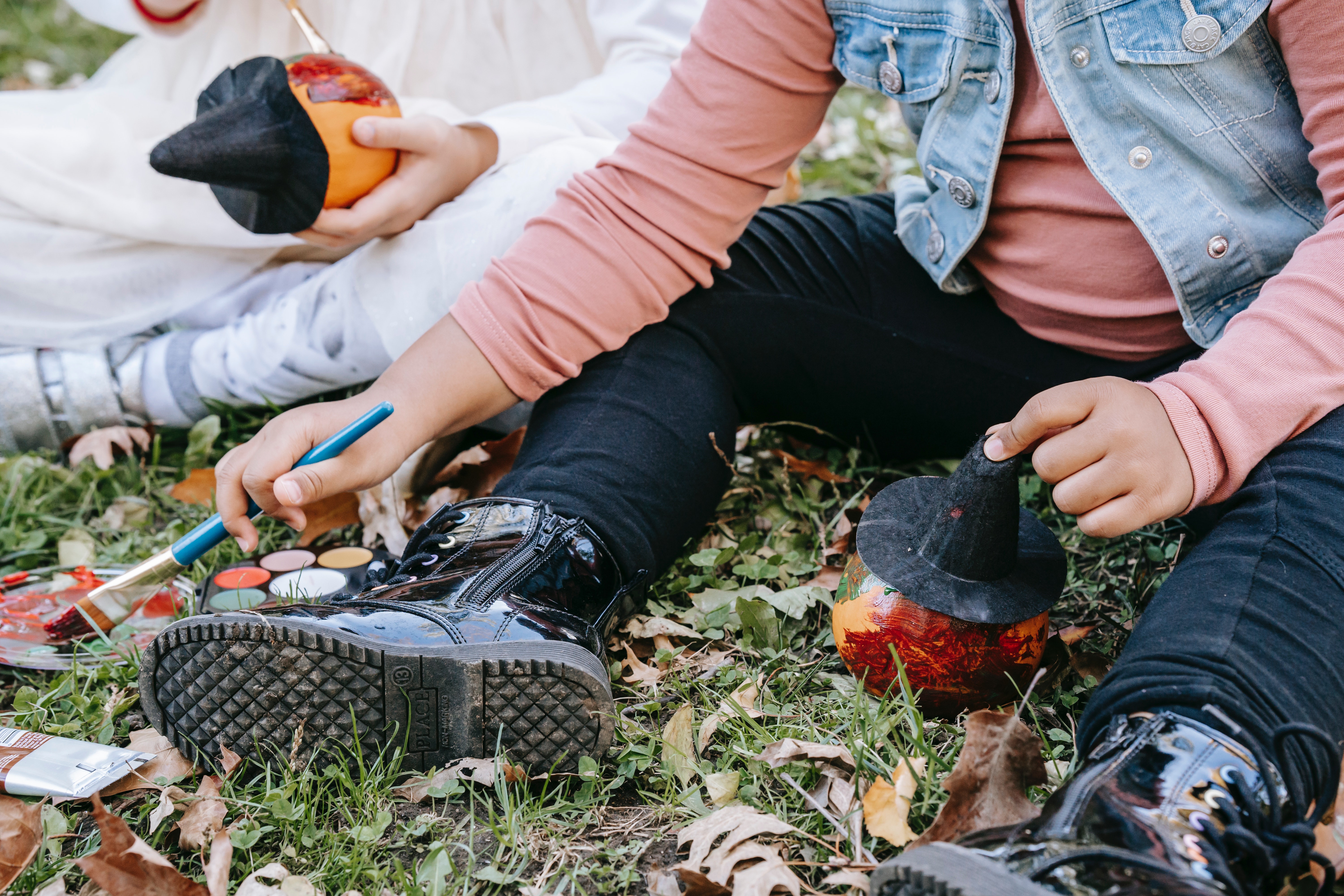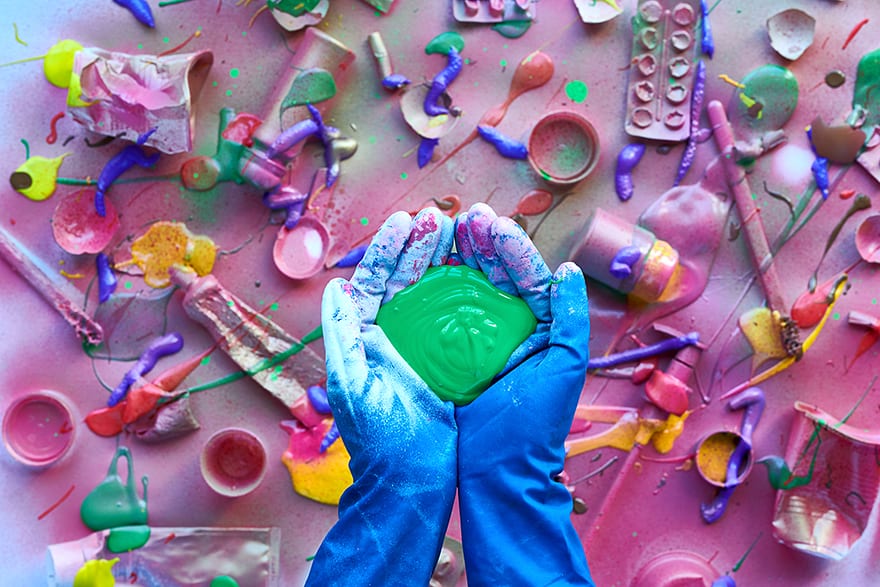Is acrylic paint safe for kids
Acrylic paint happens to be a painting ingredient in the modern world that is used by amateurs and professionals alike to produce a variety of colorful content. but questions arises are these bright and beautiful acrylic colors Is acrylic paint safe for kids to use become happy to spread mirth all around with their stunning art work collections.
However, acrylic paint is also available today as an environment-friendly, sustainable option though it might cost a bit more to the purchaser.
But when it comes to the safety of creators who come in daily contact with acrylic paint, the question arises is acrylic paint safe for the human body?
More importantly, is acrylic paint safe for young children to use?
Because of their popularity and good production quality at an expensive price point, parents these days turn to the use of acrylic paint to make their child’s creativity immortal on various surfaces that are not just canvas.

Children often play with acrylic paint on textiles, walls, and wooden blocks during their activities.
In short, yes, it is possible to let your child play with acrylic paint without any adverse consequences.
However, not every acrylic paint is suitable for your child.
Is acrylic paint toxic?
General acrylic paint which is created with longevity and professional production quality in mind is often toxic for users who are adults, let alone children.
You will be shocked to know that some acrylic paints still use lead as a component material. Lead is not even used in wall painting interior and exterior these days since the lead paint act of 1978.
Honestly, then it is easily imaginable how problematic such a substance can be to a child playing with it. Apart from lead, acrylic paint production companies can also often use formaldehyde, nickel, cobalt, cadmium, and manganese.
The most toxic of the products that can cause an immediate allergic reaction in your child and is the most readily absorbed by the human skin is chromium. Most of these materials can accumulate inside the human body, especially the soft tissues, and cause organ failure eventually.
Some acrylic paints do contain carcinogenic materials and even though their quantity is not enough to cause cancer-related issues. It is not advisable for anyone to come in contact to such components at a very early age which can make them vulnerable to subsequent exposure throughout their lives.

What risk does it put your kid into?
As a parent perhaps you are well versed with how your child at a certain age is likely to behave with their creative tools in the process of creating new artwork.
Generally, companies and many consumers like to believe that acrylic paint is safe for children over the years of 3.
And this may be true from specific testing points that these companies have to go through to label their products kids safe.
But the development and behavior of children are not uniform enough for parents to let their children come in contact with acrylic paint and supervised so easily.
Some sources also say that acrylic paint becomes more toxic when it is used for enhancement.
These procedures might include baking, sanding, ceiling, and using them in addition to hot glue and other complex liquid chemicals.
Simply painted acrylic, it is often said, is not as harmful as such procedures can make them. But at the end of the day, ‘not that harmful’ is not equivalent to being safe.
Moreover, where even so-called safe paint is leading to allergic reactions in young people, it is better to be safe than sorry.
Exposed to acrylic paint a child might quite easily (even above the age of 3)
- Swallow the paint. Swallowing acrylic paint is toxic. Swallowing it in large amounts might cause a situation requiring immediate hospitalization among the young child.
- Come into a position of non-consumption-related contact. These days all of us know about the concept of biological magnification. The amount that is toxic for a child might be completely harmless for an adult human being. Therefore, even small amounts of non consumption contact can lead to the accumulation of toxic substances in the child’s body.
- Lead to skin problems, dental problems, and eye problems. Children by nature have very sensitive skin until they reach puberty. It is natural for children to be messy while enjoying their playtime and it can lead to discoloration, allergies, and rashes. If the acrylic paint goes into their eyes, again they might require medical intervention.
- Cause nail and hair problems. If your child is playing with paint daily, unless proper care is taken it can be safely assumed that paint will be stuck on their hair and nails for longer periods than any other part of their body. Acrylic paint applied to nails can cause discoloration and for hair, it can cause breakage and scalp irritation in a very short period.
- Acrylic paint does release a lot of fumes which can lead at times to respiratory issues especially if the child is biologically inclined towards it. Especially when it comes to acrylic paint taken directly out of your workshop, you can count on It is a bad idea to let your child come in contact with that.
- This is one of the lesser issues but your child can do repeated sets of clothing with acrylic paint. As is often known, acrylic paint is not removed quickly from the textile. This is not a hazard but can cause relative irritation to the parent at times.
What kind of paint can my child use?
Acrylic paint has several benefits. And these benefits warrant their use even during child play.
- Acrylic paint is extremely vibrant and helps a child gather information about colors and developed A visual aptitude better than any other material available at that price point. some kids also use them with creative stamps
- Acrylic paint is quite durable, making the creations produced by the young child to be preserved on various surfaces by their parents for a long long time.
- Acrylic paint is thinner to use than poster paint gives better finishing and its opacity makes it a better starting point than more subtle materials like watercolors.
- Of course, you wouldn’t want your child to start with oil painting, however, creating with acrylic paint does prepare your child with an understanding of how oil painting works for their later years.
- Acrylic paints are great to mix and help your child create myriad designs that are sure to captivate the family and your friends. What it does more is for the child to develop a natural neck and interest in innovative designing, which as you can guess starts from the simplest steps.
- Acrylic paint drives fast so for older children it can be something that makes creating art with multiple layers of coloring. Definitely, for children around and above the age of 10, taking art seriously with acrylic paint can be a very good decision from an artistic point of view.

Then what paint should you be using?
Thankfully, recent production has led to the creation of several nontoxic acrylic paints on the market.
Some of these are specifically designed for children, and others for nail painting and face painting by both learners and professionals.
Fortunately, these paints are not as expensive as the usual acrylic paint that we are accustomed to coloring our products.
Of course, there is a bit of difference in the result and these nontoxic acrylic paints might not always work on inanimate items that we are coloring, but for children, it is a God-sent and a safe place to let their play thrive and continue.
Nontoxic acrylic paint is mostly water-based without a doubt and therefore, their application is almost always better handled by children.
How do I know which acrylic paint is nontoxic?
Now that we have our theoretical understanding covered, the question becomes how to discern which acrylic paint is right for our children.
For younger children who are just learning about the wonderful world of creativity in visual forms, simply the acrylic paints labeled ‘for kids’ is something that you can go for.
The trick is to choose good paint brands with great reviews that hold that target consumer to be parents buying for children, and not just general paint producing brands that deem they are ‘safe’.
As we have pointed out before, chances are that these paints will not give a similar finish as you would expect from professionally targeted paint.

However, at the same time, they will be vibrant and easy to use, without causing any harm to your young child.
As for your older children who want to take the acrylic paint to a true learner’s level and create content that they’re proud of, you might have to look for less straightforward options.
There are several available non-toxic acrylic paints on the market. Ingredients used to manufacture acrylic paint must be, by their claim, toxic to the human body. so they must be properly disposed after kids are done painting with them.
At the same time, you can contact teachers, coaches, and other institutes that specialize in teaching painting to children and ask them what paint they consider safe.
You might also think it a good idea to take to the internet and figure out which paint for child learners has the best reviews.
How to make creative time with your child safe?
A good way to make creative time with your child safe is to tailor it to your child’s custom needs and at the same time to age-appropriate tools and methods of learning.
It is considered best if a child learns creative forms under the supervision of their parents or other guardians.

This not only makes the procedure safe l but also ensures that the child can remember what they are learning and can be promoted by their parents during later sessions.
Guardians and teachers can figure out from their expert experience where the child can do better and what other help they require.
Most importantly, young children look up to their role models or approval and dumb being around motivated the child to do better.
A child should never be forced to understand things beyond their age-appropriate capacity.
The youngest of children cannot be expected to color within the lines, and beginner learners are never adept at mixing and blending.
Young children should not be allowed to go into knife painting or other more edgy art forms, and if encouraged should be done so using modifications for the same purpose.
From a general safety perspective, the following tips can be kept in mind while initiating the next creative session with your young child.
- All the materials provided to the child should be safe for their body. Not just the acrylic paint but the paper brushes and other tools should be safe. Papers and the surfaces on which the child is painting should be equally non-toxic and brushes should have strong brises that do not come off if the young child chooses to chew on them.
- The child must be made to develop a habit of cleaning their hands, feet, and face before and after each session. For younger children, the guardian must make sure that the surrounding area is also clean. Older children must be encouraged to clean the surroundings before and after their painting session.
- Children should be encouraged to follow age-appropriate designs and topics for painting. If the child is seen to be involved in very dark concepts in their painting process this might be an indication of some mental turmoil and must be treated accordingly.
- Children should repeatedly be stopped especially at a young age if they develop the habit of consuming paint stuck to their fingers. Repeated disapproval and guidance can help the child get rid of the habit quickly.
Conclusion
Acrylic paint can give a young child an extension inside into the world of visual intelligence and aptitude if used correctly and with great caution by the guardian. Guiding a child through their hobby is a continuous process, so do not hesitate to make continuous changes to their sessions and tools
FAQs
Is acrylic ink paint safe for children?
Acrylic paint which is manufactured as a nontoxic product is safer for older children. Based on creative maturity young children can also use ink paint, however, heavy body acrylic paint is the best for them.
Can children use acrylic paint for creating fingerprint paintings?
The problem with fingerprint painting using acrylic paint is less about the paint itself and more about the fact that a huge amount of the paint is coming into direct contact with the skin of the child. Non Toxic acrylic paint formulated especially for children should be used for this process which are for kids skin usage.
Can children use fluid acrylic paint?
Fluid acrylic paint is a very runny material and is probably not the best suited for young children. They are easy to make a mess with and difficult to clean up.

Being associated with art and craft field since decades as a hobbyist and life long learner has given me an opportunity to learn many new things related to art, craft, paints and pottery which i am trying to share with your guys on this website. I have expertise of being professional painter and potter for the last 20+ years
I have learned mind blowing cool tips and insights which makes me a person with ability to improvise and come up with creative ideas and solutions to make stunning and impeccable art pieces of all types which are adored by people across the globe on this website and other platform.


